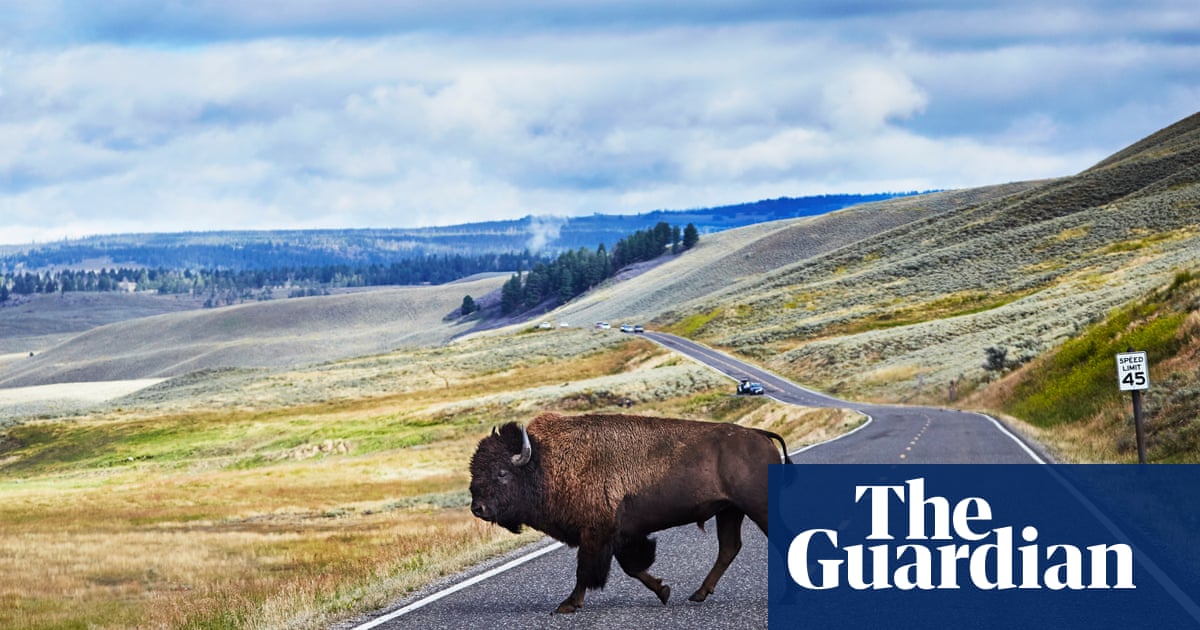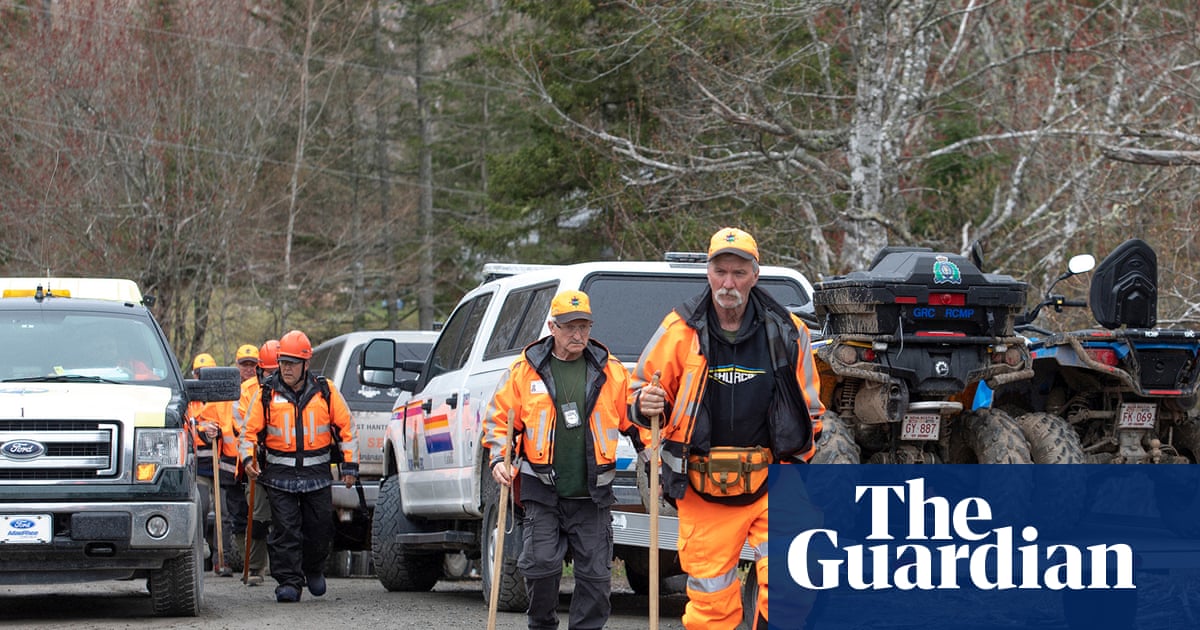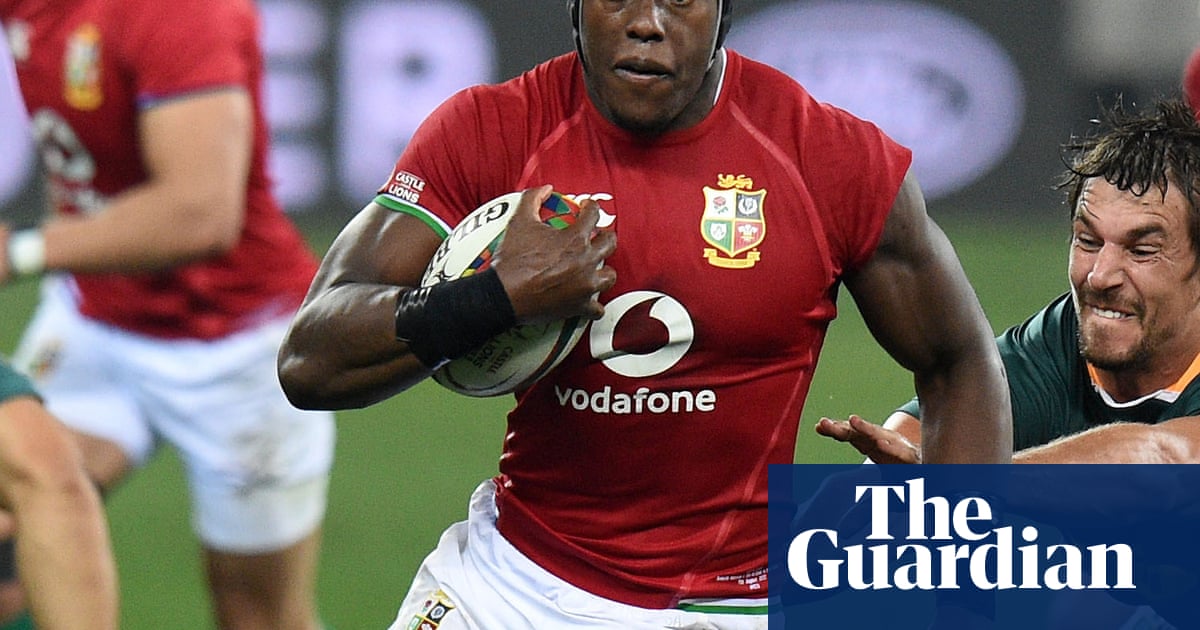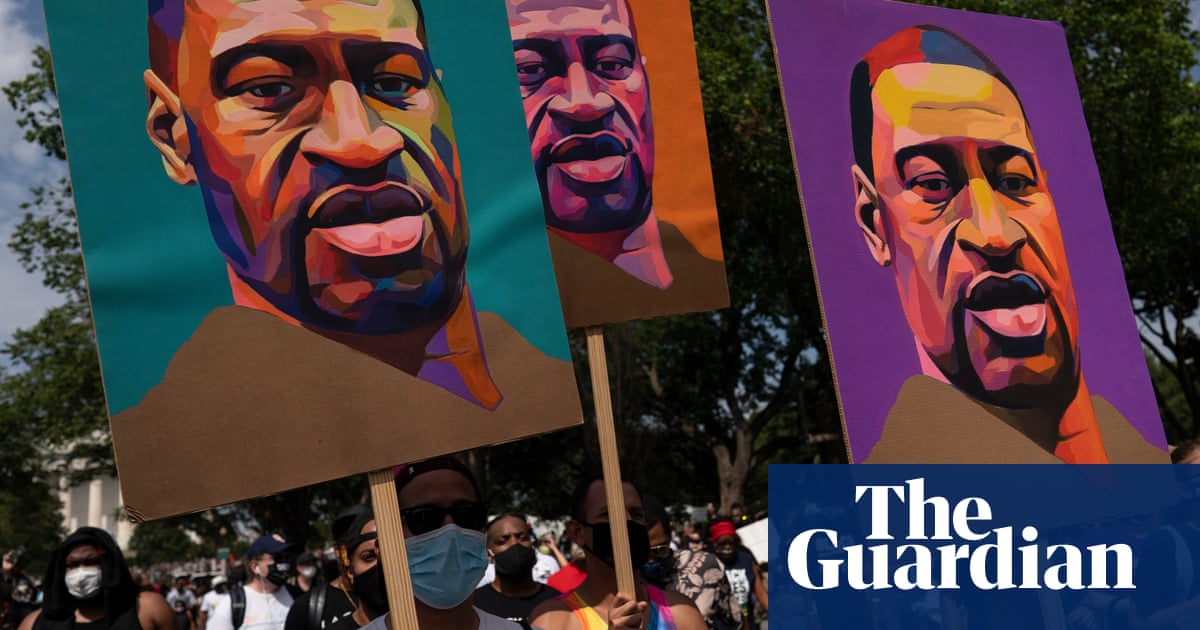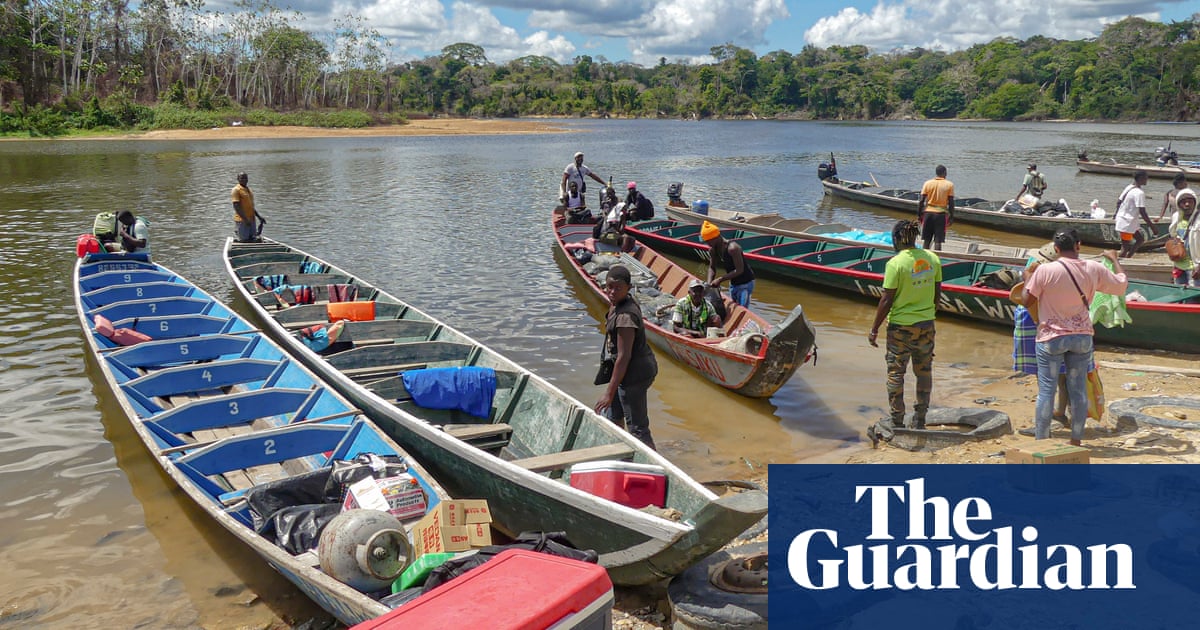The memory of a blue whale gliding past his small boat haunts Patricio Ortiz. A deep wound disfigured the crustacean’s giant body – a big chunk had been ripped from its dorsal fin. Cargo ships are the only adversary capable of inflicting such harm on a blue whale, he says.
“Nothing can be done when they’re up against those floating monsters.”
Ortiz captains whale-watching expeditions for researchers and small tourist groups and has worked in Chile’s Chañaral de Aceituno since 1978 – initially as a fisher. “The whales are why I’ve stayed.”
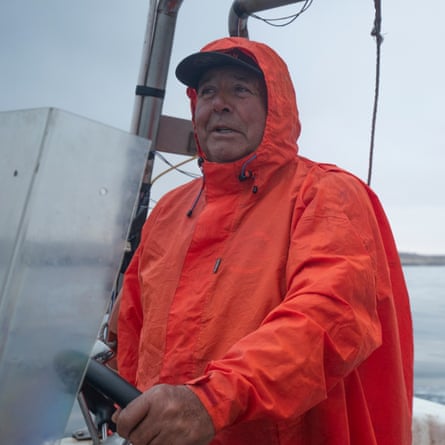
It is a place where time has stood still: the cove is dotted with small artisanal fishing boats, and a bus comes past only twice a day.
While the village has retained an antiquated charm, Ortiz has observed worrying developments at sea. Shipping lanes are increasingly congested, and whales are paying the price.
Chile records the world’s highest whale mortality caused by ship strikes. A study published in the journal Marine Policy this year found that over the past decade Chile averaged five whale deaths a year due to ship collisions. Sri Lanka and the US west coast followed with between three and four killed annually, based on necropsies of dead beached whales.
Researchers estimate these numbers are the tip of the iceberg, accounting for approximately 10% of the total deaths. Most struck whales sink or float out to sea, and carcasses that wash up on shore often lie undiscovered.
“The numbers only account for the carcasses we’re finding on the coast,” says Frederick Toro, a vet at Santo Tomás University and lead author of the study.
Toro, who conducts the necropsies, says the signs of collision are telling: “We once located a giant haematoma [blood clot] in a blue whale’s heart. That means something struck it with a lot of force,” he says.
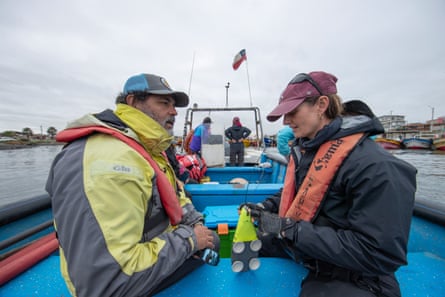
Chile’s waters are home to 40% of the world’s whale species, including at-risk baleen species such as the blue whale, sei whale and fin whale and the Marine Policy paper identifies a geographical correlation between dead whale sightings and saturated shipping lanes.
“These areas are big hubs of marine traffic associated with mining, fishing, cargo, transport and salmon farming,” says Susannah Buchan, an oceanographer at the University of Concepción and a co-author of the paper.
She stresses that there are “strike hotspots” in “virtually every area” of Chile, from the copper-heavy mining zones of Antofagasta in the north to the very southern tip of the country in Magallanes, which is populated by industrial salmon fisheries.
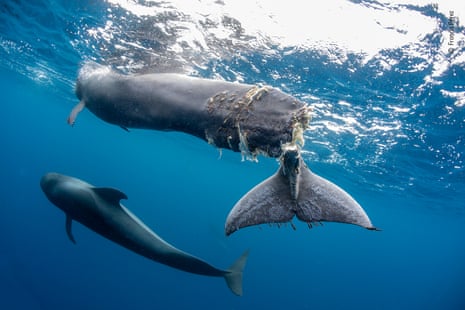
In Chañaral de Aceituno, Buchan’s team is tagging fin whales to compile a comprehensive dataset that, she hopes, will guide government policy on reducing strikes. Fin whales, the second-largest species, have the highest number of recorded deaths.
Buchan and her team take a boat 10 minutes into the open sea, kill the engine and float silently, listening for blows and splashes. It is the oldest whale-tracking method in the book, yet still, they insist, the most effective. Once the animal is detected, the boat draws alongside it, never crossing its path.
Racing with the whale at speeds of up to 45mph (72km/h), Buchan readies the tag – she only has seconds to apply it. When the animal eventually crests, she leaps forcefully towards the boat’s edge, ensuring the tag’s suction pads attach firmly.
If successful, the tag will stay on the whale’s body for up to 30 hours, monitoring dive depth, how far below the surface the whale feeds, and for how long.
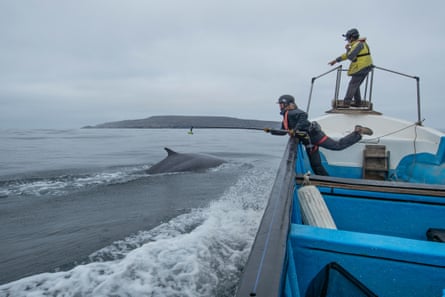
This information helps the team calculate an average probability of collision. “The more the whale is in 0-20 metres depths, the higher probability it will be exposed to strike,” says Buchan.
after newsletter promotion
The tags also register how much whales communicate. On average, 60% of the tagged fin whales do not vocalise. “This is relevant because mining companies present acoustic buoys [floating devices used to record and transmit underwater sound] as a solution to the ship strike problem,” says Buchan.
In Chile, it is common for private companies to build bespoke ports rather than share a centralised hub. This is largely due to mining companies operating in remote areas without existing infrastructure.
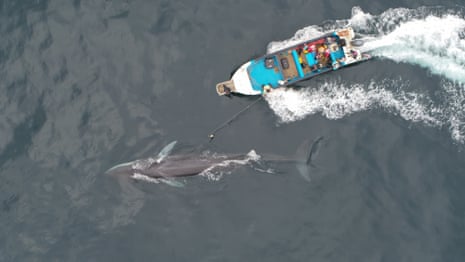
However, this has led to a proliferation of privatised ports that lack cohesive environmental regulation. Chile has 56 ports, only 10 of which are state owned.
“Chile lives off mining, that’s a reality. But what seems to be a lack of vision and planning is that every mining project has its own port,” says Buchan. “There is no big picture.”
The waters around Chañaral de Aceituno have long been encircled by the private companies, despite the fact that it is a protected marine habitat and refuge to species including whales, penguins and otters.
One project aiming to operate in the area is Dominga, a $2.5bn (£1.9bn) mining-port operation, which was rejected in January for the third time over environmental concerns. Andes Iron, the company behind the project, has vowed to appeal against the decision.
“You wouldn’t put a massive highway next to an area full of schools, would you?” says Buchan, who worries that the placid waters around Chañaral de Aceituno could turn into the next hotspot for whale strikes.
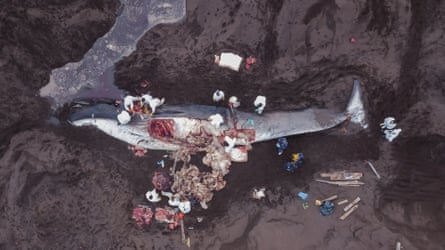
While academics and environmental activists oppose new port projects, they also highlight the need for greater regulations, including speed limits, to be implemented in existing strike hotspots.
A strike from a cargo ship travelling at more than 18 knots [21mph], says Buchan, is like “putting a whale in a blender”.
Chile’s undersecretariat of fisheries and aquaculture says its objective is to “mitigate and reduce” ship collisions, but it also stresses that local governments have a responsibility to consider measures such as vessel speed restrictions and the modification of shipping routes in critical habitats.
Meanwhile, back at Chañaral de Aceituno, Ortiz gazes at the small fishing boats dotted along the sleepy bay. He has seen cargo ships pass by him at 24-30 knots on the open sea, and worries the strike problem will only worsen.
“In this place, you can see the world’s largest whales to the smallest, only 10 minutes from the shoreline,” he says, pointing towards the expanse of ocean. “It’s a diamond in the rough. What we have, we have to look after.”

 17 hours ago
5
17 hours ago
5


